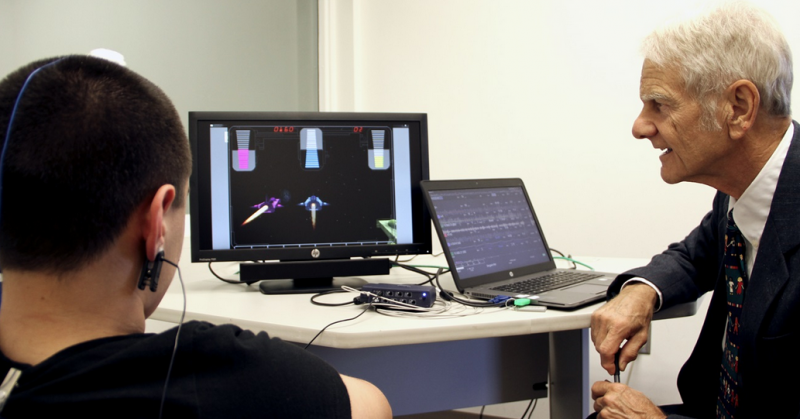BTN.com staff, June 15, 2015
?We say that we?re running a brain gym.?
That?s Dr. L. Eugene Arnold, professor emeritus of psychiatry at Ohio State University, describing a large-scale study on treatment for young children and adolescents with ADHD (attention deficit hyperactivity disorder) being conducted at Ohio State University?s Wexner Medical Center.
It?s a significant undertaking for Arnold, who has been on the Ohio State faculty for most of the past 35 years. The research he and his colleagues are performing is unique in that it employs sports-oriented techniques to counteract the condition?s effects in their young patients.
?We are training them to use their brain more efficiently and coach them on how to do it,? Arnold said.
The International Collaborative ADHD Neurofeedback (ICAN) Study is a joint effort with the University of North Carolina at Ashville, and part of a larger cooperative project featuring international neurofeedback, ADHD, statistical and clinical-trial experts. The placebo-controlled, double-blind, randomized clinical trial on ?retraining? youngsters with ADHD has seen 26 patients undergo treatment during the first year, according to Arnold.
The logo used for the study?s website is a rendering of the Little Engine That Could. Arnold said it signifies the positive attitude needed to treat ADHD, which is considered a bit of mystery to researchers.
?It?s a neuro-development disorder, but it?s not an obvious one,? Arnold said. ?They [kids] might have good coordination and be good in a sport, but it?s not a neurological problem in that sense. For them, the brain is not trained up to perform as well.?
He likens his patients to athletes preparing for the heat of competition. They?re asked to perform mental exercises under gaming conditions, and they can receive small gift certificates for successful efforts throughout the trial.
In this case, brain waves represent the muscles that must get flexed over and over again until they are able to perform at peak levels as determined by an electroencephalogram (EEG), a test that uses small electrodes attached to the scalp to detect electrical activity.
?This is based on the theory that a large proportion of people with ADHD have too many slow waves in their EEG,? Arnold explained. ?What they have are theta waves, associated with drowsiness, as if they are ready to go to sleep. But there are not enough beta waves, which are associated with thinking, problem-solving, paying attention, focusing on work and things like that.?
As with sports, this program requires dedication over time. Patients participating in the study undergo 38 treatments over three months during the school year. Typically, most of them live within an hour?s drive of Columbus and visit the Wexner Medical Center three times a week.
?This is not a fun thing, although we use a game to show feedback of what the brain is doing,? Arnold said. ?It?s work and the kids need to make a commitment. Whatever [game] they pick, it will show the relationship between the theta and beta waves.?
[btn-post-package]The stigma associated with ADHD is substantial, and beyond coming up with better treatments, part of helping the people who suffer from this condition is educating others on what it entails, the good and the bad.
?Anything that causes impairment and affects behavior carries some stigma because other people recognize something is wrong, and that unfortunately results in people having a poor opinion of those people,? Arnold said. ?But [ADHD sufferers] have talents and gifts and ? creative ways. More and more celebrities are ? saying they have ADHD.
?In certain societies, like hunter-gather, it might be a good thing, being easily distracted or alerted,? he added. ?Some people who have those kinds of skills and tendencies, if they can learn to channel them, can make use of them in the Information Age.?
By Tony Moton







